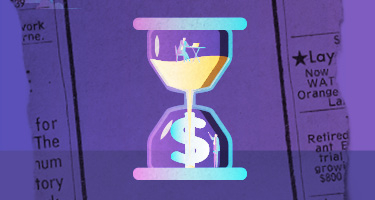“Quiet quitting” is a new catchphrase taking the media by storm and alarming employers. While no one is quite sure who originally coined the term, a TikTok uprising on the topic has spilled over into mainstream news and become a white-hot topic of public discourse.
Different interpretations of what exactly the phrase means abound. Some define it as continuing to perform work duties, but no longer subscribing to the “hustle culture” that says work has to be your life. Others say it means “checking out” from work, not accepting additional work, or just doing the bare minimum and avoiding going above and beyond.
It’s difficult to argue against the idea that reduced employee stress, less burnout, and encouraging healthy boundaries between employees’ work and personal life are positive goals that should be welcome in any workplace. However, many employers are trying to navigate what to do when an employee’s “quiet quitting” comes in the form of a drastic drop in work performance or just plain failure to fulfill their job duties.
As an employment law attorney, I offer the following steps for how employers can combat quiet quitting in a way that supports both the employers’ and employees’ needs.
Combatting quiet quitting—legally speaking
Step #1: The informal discussionHave an informal and empathetic discussion with the employee to get a sense of what is going on. Be alert for any mention of medical or family issues. If an employee has a disability or qualifies for family or medical leave, it is imperative to comply with laws like the ADA, the FMLA, and equivalent state statutes.
This is also an excellent time to have a frank conversation about workplace culture and any obstacles the employee may be facing that keep them from adequately performing their duties. Perhaps their plate is too full, or their work is being held back by an underperforming teammate.
Following this conversation, draft a note, email, or some other simple written record of the conversation to maintain internally and refer back to later if needed.
Step #2: Formal verbal counseling
If the employer cannot identify a protected cause for the decline in the employee’s performance and inability to meet key job metrics, and assuming the problem continues, the next step in combatting quiet quitting is formal verbal counseling.
Again, the employee’s immediate supervisor should provide this, and the discussion should include details and specific examples about the observed performance problems, and a list of agreed-upon actions or next steps expected from the employee to resolve them.
Continue to document the verbal counseling in writing for internal record keeping. Employers can repeat this step as often as they feel comfortable, in keeping with the business’s needs.
Step #3: Written discipline and HR involvement
If the performance problems still do not improve, it is time for written discipline and the involvement of HR. This usually takes the form of a written notice provided to the employee, outlining the areas where the employee has fallen short, dates of previous interventions, and a warning that should the unacceptable performance continue, their conduct could lead to termination.
Another option is to create a more detailed “performance improvement plan,” commonly referred to as a “PIP.” A PIP outlines the specific expectations and actions needed to course correct measurable outcomes and the period during which the employer expects improvement—typically 30, 60, or 90 days.
Whatever form this written discipline takes, it is essential to have the employee read and sign the document.
Is it time to terminate the “quiet quitter”?
If the employee demonstrates no change or progress after the employer has taken the three steps outlined above, a decision to terminate or demote the employee is usually appropriate. However, before doing so, I always recommend evaluating the legal risk factors, ideally with a qualified employment attorney, to ensure that you have taken every step to protect the company. This is particularly important if the employee falls into a protected class due to age, race, religion, mental or physical disability, etc.
If the resulting decision is termination, the employer must provide the employee with a written termination notice that includes the reasons, and the employee should sign this document. Preserving written documentation of the employee’s performance and previous disciplinary actions is vital for employers to ensure they have evidence demonstrating that they took all reasonable and fair steps before termination.
Employers should also retain all informal notes and formal written documentation, even post-termination, in case of a legal challenge at a later date.
Employers: Key is minimizing your risk
Performance problems are hard on managers and on the business. But with the right approach, it’s possible to minimize risk and combat quiet quitting without being forced to make the tough decision to terminate an employee.


























